
Cirkit Designer
Your all-in-one circuit design IDE
Home /
Component Documentation
How to Use AS7261: Examples, Pinouts, and Specs
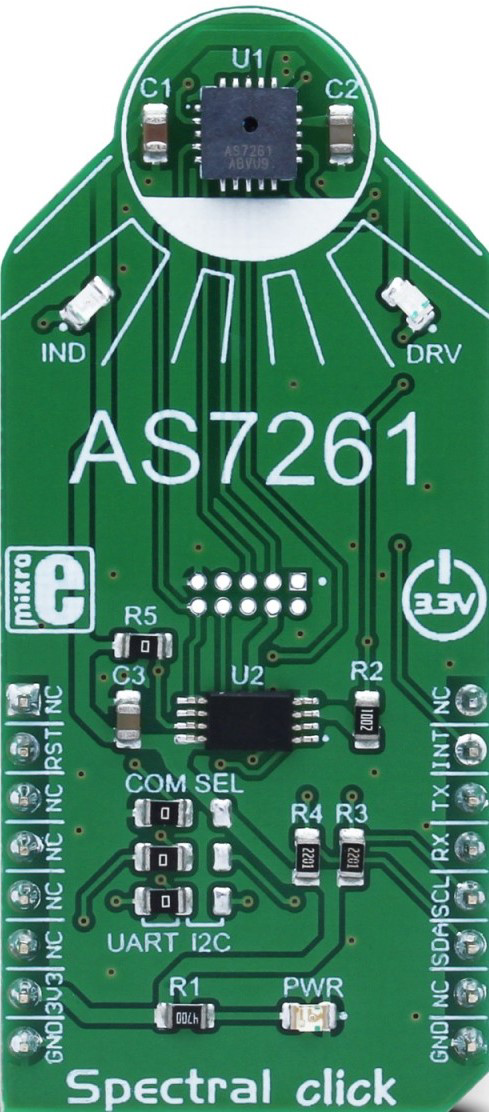
 Design with AS7261 in Cirkit Designer
Design with AS7261 in Cirkit DesignerIntroduction
The AS7261 is a digital multispectral sensor designed to provide precise color measurements across the visible spectrum. This sensor is highly valued in applications requiring accurate color detection and analysis. Common use cases include:
- Lighting: Ensuring consistent color quality in LED lighting systems.
- Agriculture: Monitoring plant health by analyzing leaf color.
- Industrial Processes: Quality control in manufacturing by detecting color variations.
Explore Projects Built with AS7261
Battery-Powered Emergency Alert System with NUCLEO-F072RB, SIM800L, and GPS NEO 6M
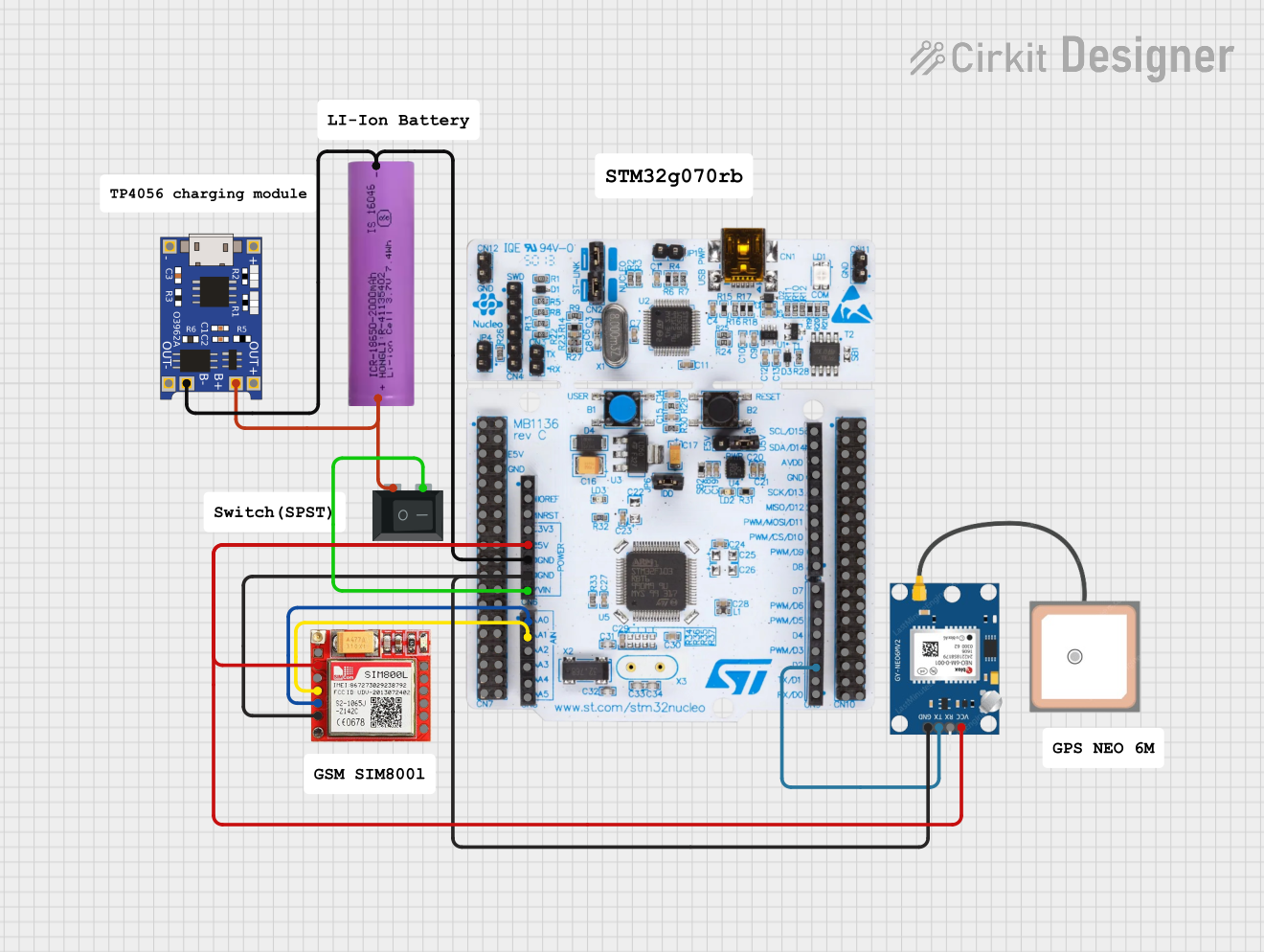
This circuit is an emergency alert system that uses a NUCLEO-F072RB microcontroller to send SMS alerts and make calls via a SIM800L GSM module, while obtaining location data from a GPS NEO 6M module. The system is powered by a Li-ion battery and includes a TP4056 module for battery charging and protection, with a rocker switch to control power to the microcontroller.
 Open Project in Cirkit Designer
Open Project in Cirkit DesignerSatellite-Based Timing and Navigation System with SDR and Atomic Clock Synchronization
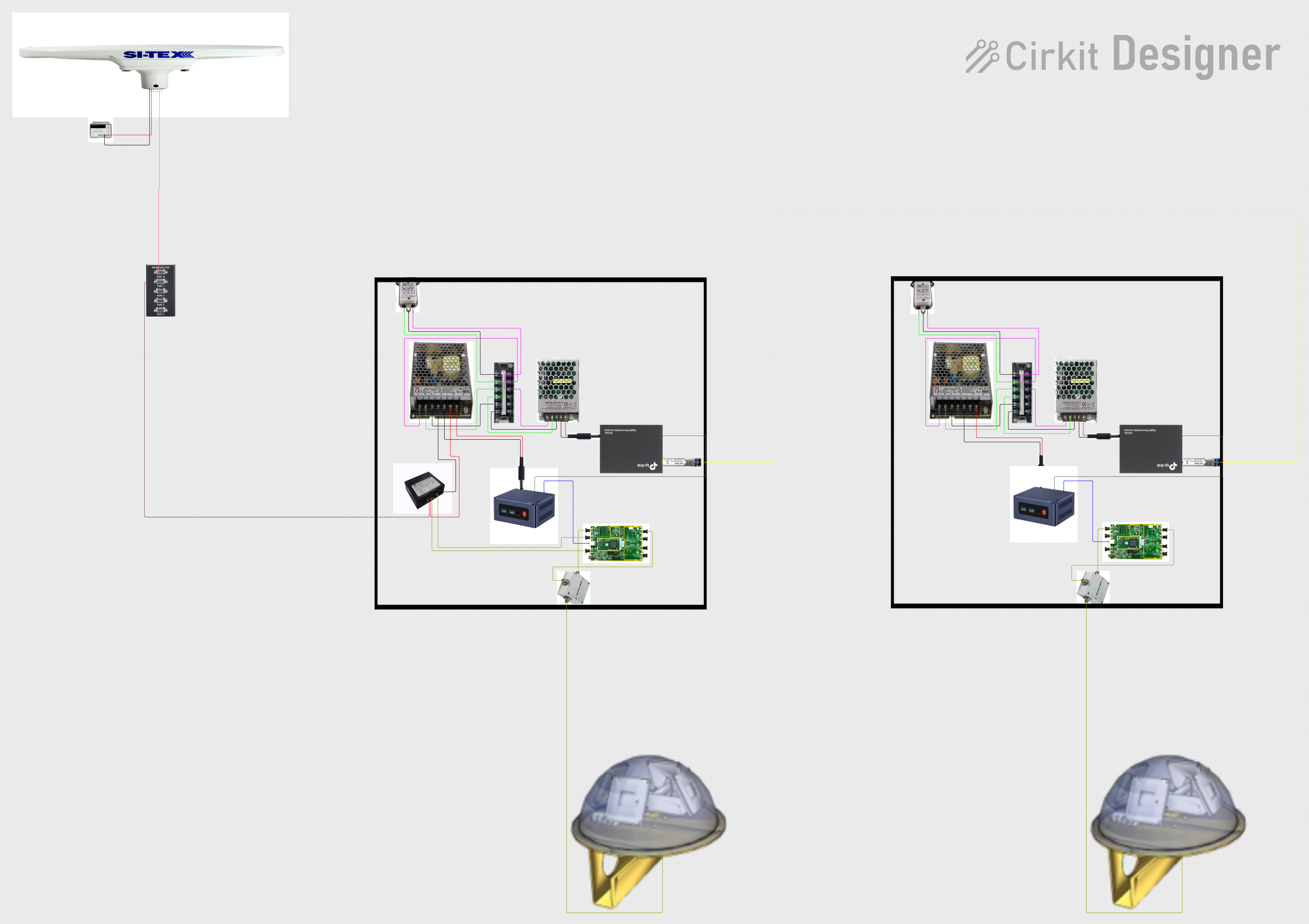
This circuit appears to be a complex system involving power supply management, GPS and timing synchronization, and data communication. It includes a SI-TEX G1 Satellite Compass for GPS data, an XHTF1021 Atomic Rubidium Clock for precise timing, and Ettus USRP B200 units for software-defined radio communication. Power is supplied through various SMPS units and distributed via terminal blocks and DC jacks. Data communication is facilitated by Beelink MINI S12 N95 computers, RS232 splitters, and a 1000BASE-T Media Converter for network connectivity. RF Directional Couplers are used to interface antennas with the USRP units, and the entire system is likely contained within cases for protection and organization.
 Open Project in Cirkit Designer
Open Project in Cirkit DesignerArduino UNO and SIM A7670c Based SMS Notification System with Battery Power
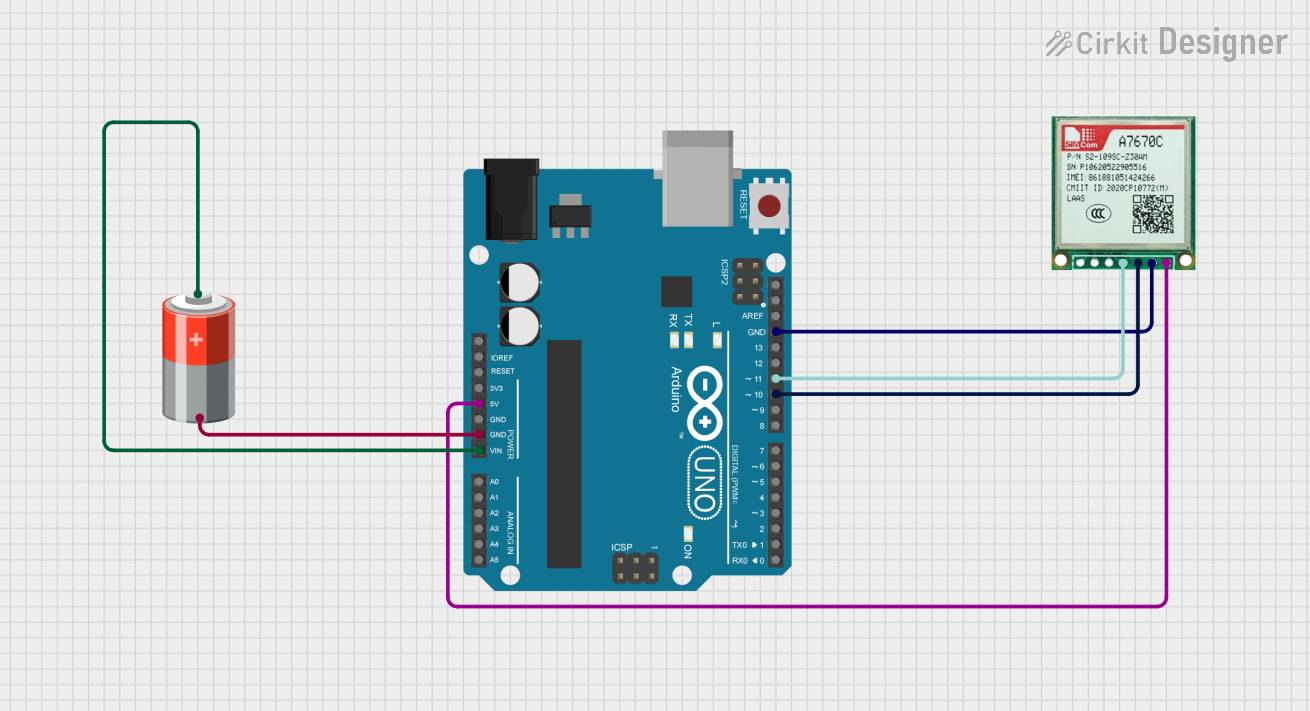
This circuit integrates an Arduino UNO with a Sim A7670c GSM module and a 5V battery to enable SMS communication and control a relay based on input from a switch and a push button. The Arduino handles the logic for sending SMS notifications and toggling the relay, while the GSM module facilitates the SMS functionality.
 Open Project in Cirkit Designer
Open Project in Cirkit DesignerESP32 and SIM900A Based Smart Home Automation with Wi-Fi and GSM Control
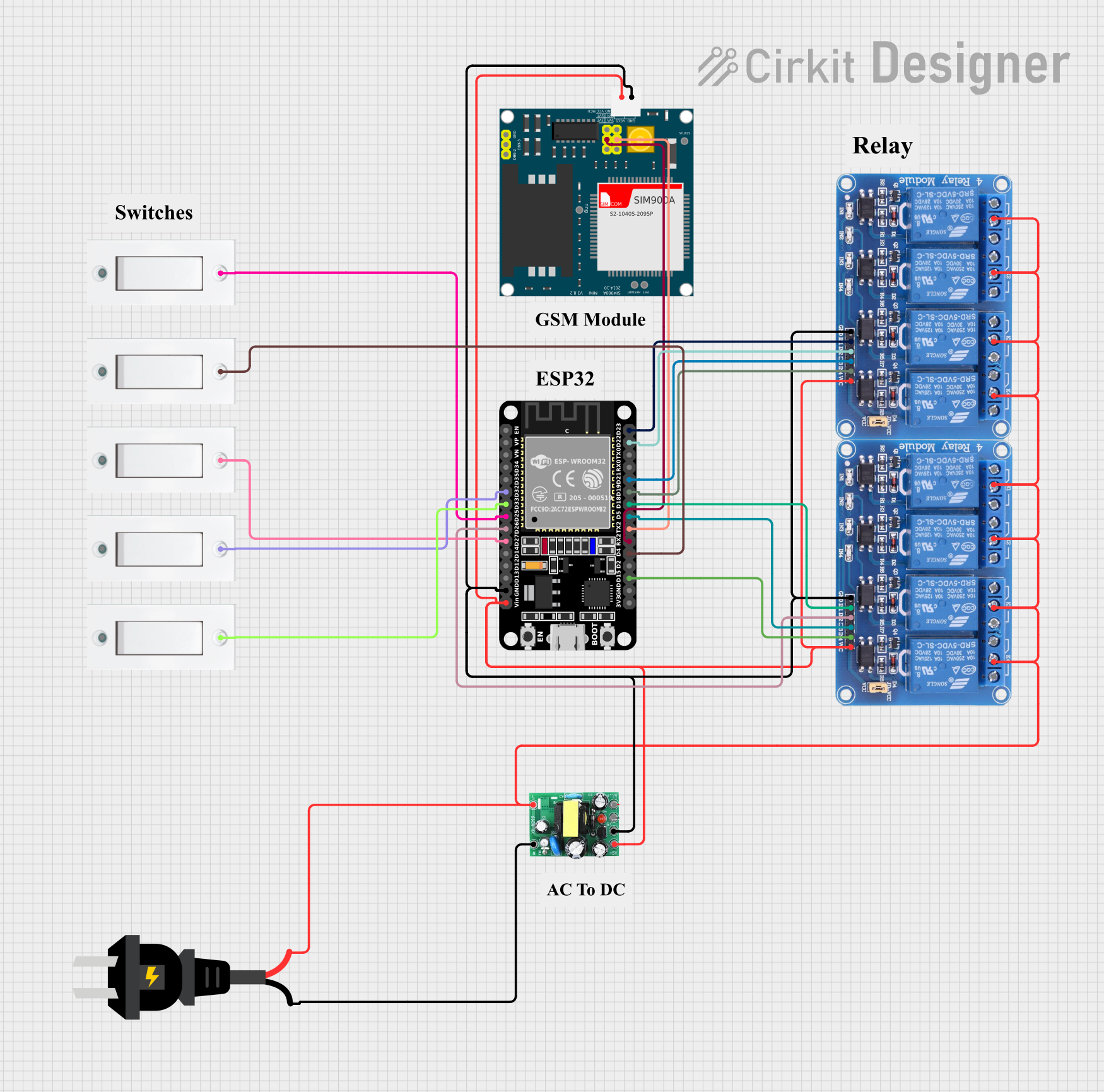
This circuit features an ESP32 microcontroller interfaced with multiple flush switches and two 4-channel relay modules to control various loads. It also includes a SIM900A module for GSM communication and an AC to DC converter for power management. The ESP32 handles input from the switches and controls the relays, while the SIM900A provides remote communication capabilities.
 Open Project in Cirkit Designer
Open Project in Cirkit DesignerExplore Projects Built with AS7261

Battery-Powered Emergency Alert System with NUCLEO-F072RB, SIM800L, and GPS NEO 6M
This circuit is an emergency alert system that uses a NUCLEO-F072RB microcontroller to send SMS alerts and make calls via a SIM800L GSM module, while obtaining location data from a GPS NEO 6M module. The system is powered by a Li-ion battery and includes a TP4056 module for battery charging and protection, with a rocker switch to control power to the microcontroller.
 Open Project in Cirkit Designer
Open Project in Cirkit Designer
Satellite-Based Timing and Navigation System with SDR and Atomic Clock Synchronization
This circuit appears to be a complex system involving power supply management, GPS and timing synchronization, and data communication. It includes a SI-TEX G1 Satellite Compass for GPS data, an XHTF1021 Atomic Rubidium Clock for precise timing, and Ettus USRP B200 units for software-defined radio communication. Power is supplied through various SMPS units and distributed via terminal blocks and DC jacks. Data communication is facilitated by Beelink MINI S12 N95 computers, RS232 splitters, and a 1000BASE-T Media Converter for network connectivity. RF Directional Couplers are used to interface antennas with the USRP units, and the entire system is likely contained within cases for protection and organization.
 Open Project in Cirkit Designer
Open Project in Cirkit Designer
Arduino UNO and SIM A7670c Based SMS Notification System with Battery Power
This circuit integrates an Arduino UNO with a Sim A7670c GSM module and a 5V battery to enable SMS communication and control a relay based on input from a switch and a push button. The Arduino handles the logic for sending SMS notifications and toggling the relay, while the GSM module facilitates the SMS functionality.
 Open Project in Cirkit Designer
Open Project in Cirkit Designer
ESP32 and SIM900A Based Smart Home Automation with Wi-Fi and GSM Control
This circuit features an ESP32 microcontroller interfaced with multiple flush switches and two 4-channel relay modules to control various loads. It also includes a SIM900A module for GSM communication and an AC to DC converter for power management. The ESP32 handles input from the switches and controls the relays, while the SIM900A provides remote communication capabilities.
 Open Project in Cirkit Designer
Open Project in Cirkit DesignerTechnical Specifications
Key Technical Details
| Parameter | Value |
|---|---|
| Supply Voltage | 2.7V to 3.6V |
| Operating Current | 100 µA (typical) |
| Spectral Range | 450 nm to 650 nm |
| Interface | I²C |
| Measurement Modes | 6-channel visible spectrum |
| Operating Temperature | -40°C to +85°C |
Pin Configuration and Descriptions
| Pin Number | Pin Name | Description |
|---|---|---|
| 1 | VDD | Power Supply (2.7V to 3.6V) |
| 2 | GND | Ground |
| 3 | SDA | I²C Data Line |
| 4 | SCL | I²C Clock Line |
| 5 | INT | Interrupt Output |
| 6 | GPIO | General Purpose Input/Output |
Usage Instructions
How to Use the AS7261 in a Circuit
- Power Supply: Connect the VDD pin to a 3.3V power supply and the GND pin to ground.
- I²C Communication: Connect the SDA and SCL pins to the corresponding I²C pins on your microcontroller (e.g., Arduino UNO).
- Interrupts (Optional): Connect the INT pin to a digital input pin on your microcontroller if you wish to use interrupts.
- GPIO (Optional): The GPIO pin can be used for additional control or status signaling.
Important Considerations and Best Practices
- Power Supply: Ensure a stable power supply within the specified range to avoid measurement inaccuracies.
- I²C Pull-up Resistors: Use appropriate pull-up resistors (typically 4.7kΩ) on the SDA and SCL lines.
- Sensor Placement: Place the sensor in a location where it can accurately capture the light from the target object without obstructions.
Sample Arduino Code
Below is a sample code to interface the AS7261 with an Arduino UNO:
#include <Wire.h>
#define AS7261_ADDRESS 0x49 // I2C address of the AS7261
void setup() {
Wire.begin(); // Initialize I2C communication
Serial.begin(9600); // Initialize serial communication
configureAS7261(); // Configure the AS7261 sensor
}
void loop() {
readColorData(); // Read and print color data
delay(1000); // Wait for 1 second before next reading
}
void configureAS7261() {
Wire.beginTransmission(AS7261_ADDRESS);
Wire.write(0x04); // Write to configuration register
Wire.write(0x01); // Set configuration value
Wire.endTransmission();
}
void readColorData() {
Wire.beginTransmission(AS7261_ADDRESS);
Wire.write(0x08); // Register to read color data
Wire.endTransmission();
Wire.requestFrom(AS7261_ADDRESS, 6); // Request 6 bytes of data
if (Wire.available() == 6) {
uint16_t red = Wire.read() << 8 | Wire.read(); // Read red channel
uint16_t green = Wire.read() << 8 | Wire.read(); // Read green channel
uint16_t blue = Wire.read() << 8 | Wire.read(); // Read blue channel
Serial.print("Red: ");
Serial.print(red);
Serial.print(" Green: ");
Serial.print(green);
Serial.print(" Blue: ");
Serial.println(blue);
}
}
Troubleshooting and FAQs
Common Issues
No Data Output:
- Solution: Ensure the I²C connections are correct and the pull-up resistors are in place. Verify the sensor's power supply.
Inaccurate Color Measurements:
- Solution: Check for stable power supply and proper sensor placement. Ensure there are no obstructions or reflections affecting the sensor.
I²C Communication Errors:
- Solution: Verify the I²C address and ensure there are no address conflicts on the bus. Check the integrity of the SDA and SCL lines.
FAQs
Q1: Can the AS7261 be used with a 5V microcontroller?
- A1: The AS7261 operates at 3.3V. If using a 5V microcontroller, level shifters are required for the I²C lines.
Q2: How do I calibrate the AS7261 for accurate measurements?
- A2: Calibration involves using known reference colors and adjusting the sensor's readings accordingly. Refer to the sensor's datasheet for detailed calibration procedures.
Q3: Can the AS7261 measure UV or IR light?
- A3: No, the AS7261 is designed to measure visible light in the 450 nm to 650 nm range.
By following this documentation, users can effectively integrate the AS7261 digital multispectral sensor into their projects, ensuring accurate and reliable color measurements.